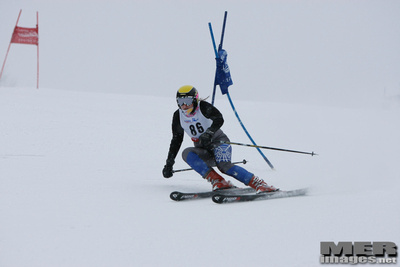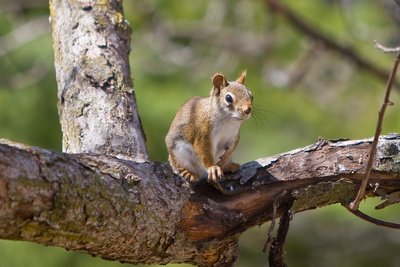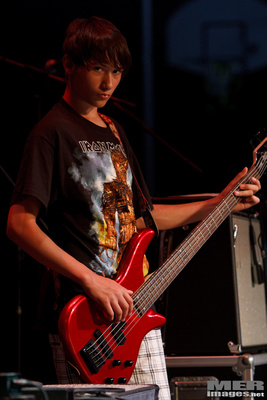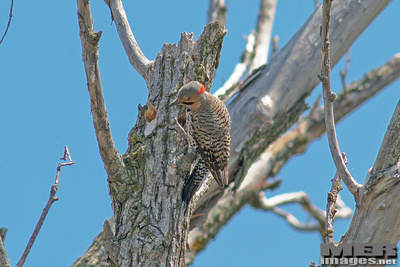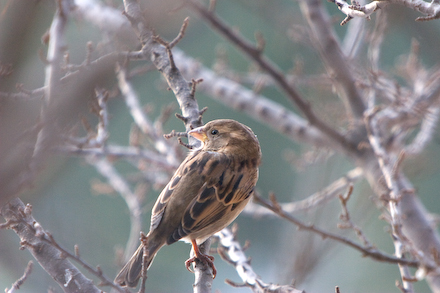
If you have never tried then you probably don’t know what I’m talking about. It seems relatively easy. You see a bird in a feeder and so you point the camera at it and snap off a picture. Darn! He moved just as I pressed the shutter release. So you try again. And again. And again! You know what? They never really stay still! And when you do finally get a picture the first thing you notice when you bring it up on your computer screen is how small the bird is in the photo!
The fact is that birds, even the ones outside the window in the bird feeder, are hard to photograph. I should know. I have been taking pictures of birds and chipmunks and squirrels and even deer in my backyard for quite some time. When it comes to birds it is always a challenge. They are always moving and their movements are quick so you either time it just right and get them between movements or you use a very fast shutter speed. And then there is the fact that birds are most active just around sunrise and sunset. At those times the light is at a premium… definitely not enough to get fast shutter speeds. There is nothing worse than seeing a cardinal in the feeder, but it’s too dark to get a pic!
It’s also interesting that the same problems I have experienced in getting bird photos I have also found to be a problem with sports photos. As you would expect for sports you need a fast shutter speed to stop the action. But you also need a fast focus because you are always trying to catch a moving target. For as many good sports photos as I have captured there were a lot more I missed because it wasn’t in focus or the light was insufficient to use a fast enough shutter speed to stop the action.
Ski racing is a challenge because you get maybe 2 seconds each run to snap off a series of photos. And if the autofocus gets confused… then you get nothing. Unfortunately, that has happened way too many times when trying to photograph my daughter this season. At least in basketball I have an entire game to get some decent shots, but even that has been a challenge for me. The gyms are poorly lit which means I need to push up the ISO sensitivity. That adds grain in the photos which makes them not as clear. And in order to get a reasonable shutter speed I purposely underexpose which means they will require some post processing adjustment before publishing them. And you thought all I did was just snap pictures and they magically appeared on my website. That process might have to be the subject of a future blog entry… what I do with the rest of my evening after a shooting a game!?!
Fortunately, there seems to be a solution to these issues. Use the right lens for the job. There are lenses that have larger openings to let more light in. That allows for a faster shutter speed while retaining proper exposure. It also improve focus speed and accuracy. The only problem with these lenses is that they are big and heavy!
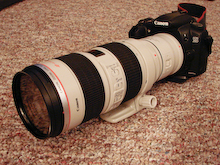
With faster shutter speeds and instantaneous autofocus a larger lens takes care of the capture of sports action. But what about those small birds? You can finally get photos of them, but they are still so small! The solution to that is a long lens. The problem with a long lens with a large aperture is that is really, really heavy! There are some lenses that weigh over 10 pounds! The are designed for tripod only use and definitely not something you walk around with. Another solution is to use a shorter lens and add an extender. The extender is an attachment that multiplies the focal length (reach) by some value, usually 1.4 or 2. That means that a lens with a max focal length of 200mm will become a 400mm lens with a 2x extender.
The disadvantage of an extender is that there is some degradation in quality of the image and there is also some loss of light so you will not be able to attain as fast a shutter speed as you could without the extender. But it is a less expensive and more versatile option than a single long lens because you can always remove the extender when working in low light conditions or indoors. In my case a 70-200mm focal length will work well for basketball and ski racing. And when I want to shoot those tiny birds or distant wildlife I can add the extender and get the extra reach.
So far the bird photos have proved very promising. The photo of the tree sparrow was shot using the 2x extender. Obviously the quality is still good enough to get very decent pics. By the way that is an upcropped photo. Usually I would have to crop my photos quite a bit to get a bird that large in the photo. As for indoor basketball… we will see Friday night which is Neal’s next home game. I’ll keep my fingers crossed!
